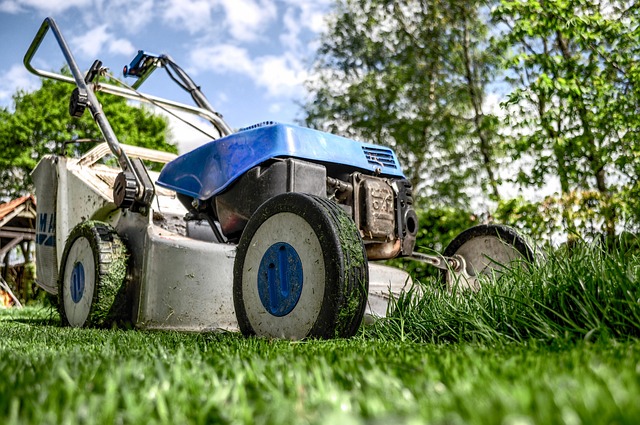Learn more about lawn mowing
Lawn mowing is more than just a weekend chore—it's a fundamental practice that shapes the health, appearance, and resilience of your grass. Whether you're a first-time homeowner or a seasoned gardener, understanding the principles behind effective mowing can transform your outdoor space. From choosing the right equipment to timing your cuts perfectly, every detail matters when it comes to cultivating a lush, green lawn that stands up to seasonal challenges and everyday wear.

Maintaining a vibrant lawn requires more than occasional trimming. The way you mow, the tools you use, and the schedule you follow all play critical roles in promoting healthy grass growth and preventing common lawn problems. By learning the fundamentals of proper mowing practices, you can create a landscape that not only looks beautiful but also thrives throughout the growing season.
Discover effective mowing techniques
The technique you use when mowing directly impacts your lawn’s health. One of the most important principles is the one-third rule: never remove more than one-third of the grass blade height in a single mowing session. Cutting too much at once stresses the grass, weakens its root system, and makes it more vulnerable to weeds and disease. For example, if your grass is three inches tall, you should only cut it down to two inches. Additionally, varying your mowing pattern each time prevents soil compaction and helps grass grow upright rather than leaning in one direction. Overlapping your passes slightly ensures you don’t miss any strips, creating a uniform appearance. Sharp mower blades are essential—dull blades tear grass rather than cutting it cleanly, leaving ragged edges that turn brown and invite pests.
Understand the best mowing schedules
Timing your mowing sessions appropriately ensures optimal grass health and growth. During the peak growing season in spring and early summer, most lawns benefit from weekly mowing. As temperatures rise in mid-summer, grass growth typically slows, and you may extend the interval to every 10 days. In fall, growth picks up again before winter dormancy sets in. Mowing frequency should always be guided by grass height rather than a strict calendar schedule. Early morning mowing is often discouraged because wet grass clumps and clogs mowers, while midday heat can stress freshly cut grass. Late afternoon or early evening, when grass is dry but temperatures are cooler, is generally the ideal time. Avoid mowing during drought conditions or extreme heat, as cutting stressed grass can cause lasting damage.
Explore tools for a perfect lawn
Selecting the right mowing equipment makes a significant difference in both efficiency and results. Push reel mowers are eco-friendly, quiet, and ideal for small, flat lawns, though they require more physical effort. Gas-powered rotary mowers offer more power and are suitable for larger areas with varied terrain, but they require regular maintenance and fuel. Electric mowers, both corded and battery-powered, provide a middle ground with less noise and emissions than gas models. For expansive properties, riding mowers or lawn tractors save time and reduce physical strain. Beyond the mower itself, consider accessories like baggers for collecting clippings, mulching kits that return nutrients to the soil, and edgers for clean borders. Regular blade sharpening, air filter changes, and oil checks keep your equipment running smoothly and extend its lifespan.
Gain tips for healthy grass growth
Healthy grass starts with proper mowing practices combined with good overall lawn care. Leaving grass clippings on the lawn after mowing, known as grasscycling, returns valuable nitrogen and organic matter to the soil, reducing the need for synthetic fertilizers. Ensure your mower is set to the appropriate height for your grass type—cool-season grasses like Kentucky bluegrass thrive at 2.5 to 3.5 inches, while warm-season varieties such as Bermuda grass prefer 1 to 2 inches. Watering deeply but infrequently encourages deep root growth, making grass more drought-resistant. Aeration, typically performed in spring or fall, relieves soil compaction and allows air, water, and nutrients to reach the roots more effectively. Overseeding thin areas and applying balanced fertilizers according to soil test recommendations further promote dense, resilient turf.
Master the art of lawn maintenance
True lawn mastery involves integrating mowing with a comprehensive maintenance routine. Regular inspection for weeds, pests, and disease allows you to address problems before they spread. Applying pre-emergent herbicides in early spring prevents weed seeds from germinating, while spot-treating existing weeds minimizes chemical use. Dethatching removes excessive buildup of dead grass and roots, improving water and nutrient penetration. Seasonal adjustments are crucial—raising mowing height slightly in summer helps grass retain moisture, while lowering it in fall prepares the lawn for winter dormancy. Edging along walkways, driveways, and garden beds creates crisp, professional-looking boundaries. Consistency is key: a well-maintained lawn requires ongoing attention rather than sporadic intensive efforts. By developing a routine that incorporates mowing, watering, fertilizing, and pest management, you create an environment where grass can flourish year-round.
Conclusion
Understanding the fundamentals of lawn mowing transforms it from a mundane task into an opportunity to cultivate a healthy, attractive outdoor space. By applying effective techniques, following appropriate schedules, using the right tools, and integrating mowing into a broader maintenance strategy, you can achieve a lawn that enhances your property’s curb appeal and provides a welcoming environment for outdoor activities. Consistent care and attention to detail make all the difference in creating a landscape you can be proud of throughout every season.


